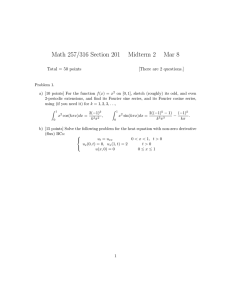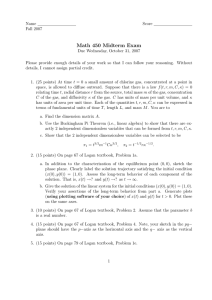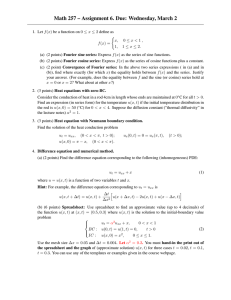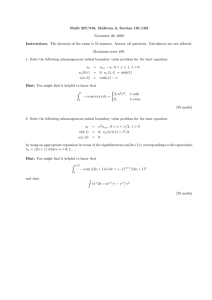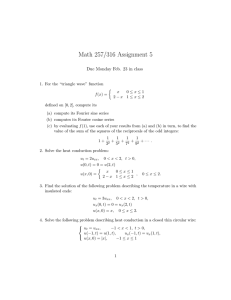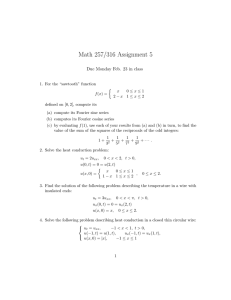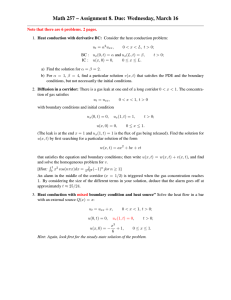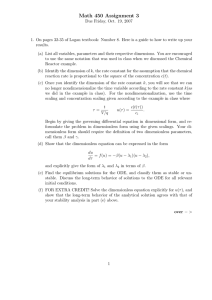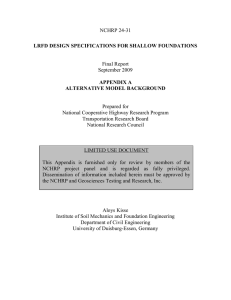APPLIED MATH MASTER’S EXAM
advertisement
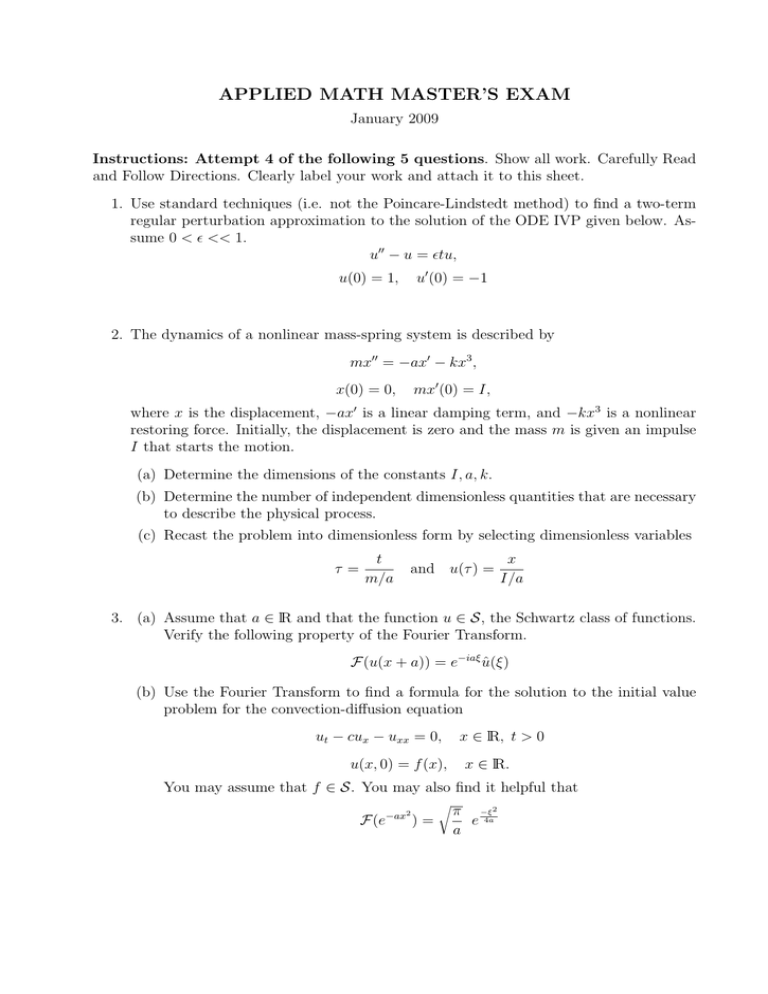
APPLIED MATH MASTER’S EXAM January 2009 Instructions: Attempt 4 of the following 5 questions. Show all work. Carefully Read and Follow Directions. Clearly label your work and attach it to this sheet. 1. Use standard techniques (i.e. not the Poincare-Lindstedt method) to find a two-term regular perturbation approximation to the solution of the ODE IVP given below. Assume 0 < << 1. u00 − u = tu, u0 (0) = −1 u(0) = 1, 2. The dynamics of a nonlinear mass-spring system is described by mx00 = −ax0 − kx3 , mx0 (0) = I, x(0) = 0, where x is the displacement, −ax0 is a linear damping term, and −kx3 is a nonlinear restoring force. Initially, the displacement is zero and the mass m is given an impulse I that starts the motion. (a) Determine the dimensions of the constants I, a, k. (b) Determine the number of independent dimensionless quantities that are necessary to describe the physical process. (c) Recast the problem into dimensionless form by selecting dimensionless variables τ= t m/a and u(τ ) = x I/a 3. (a) Assume that a ∈ lR and that the function u ∈ S, the Schwartz class of functions. Verify the following property of the Fourier Transform. F(u(x + a)) = e−iaξ û(ξ) (b) Use the Fourier Transform to find a formula for the solution to the initial value problem for the convection-diffusion equation ut − cux − uxx = 0, u(x, 0) = f (x), x ∈ lR, t > 0 x ∈ lR. You may assume that f ∈ S. You may also find it helpful that −ax2 F(e r )= π −ξ2 e 4a a 4. Find the extremal for the functional J(y) = Z 1 [y 0 (x)]2 dx + [y(1)]2 0 where y ∈ C 2 [0, 1] and y(0) = 1. 5. (a) Compute the eigenvalues and corresponding eigenfunctions for the SLP φ00 = λφ φ(0) = φ(1) = 0 (b) The following initial boundary value problem for the damped wave equation governs the displacement of a string immersed in a fluid. The string has unit length and is fixed at its ends. Its initial displacement is given by f (x), and it has zero initial velocity. Use Separation of Variables to find the solution. utt + ut = uxx , 0 < x < 1, t > 0 u(0, t) = 0, u(1, t) = 0, u(x, 0) = f (x), ut (x, 0) = 0, HINT: You may find it useful that R1 2 0 t>0 0<x<1 sin2 (nπx) dx = 1 2
